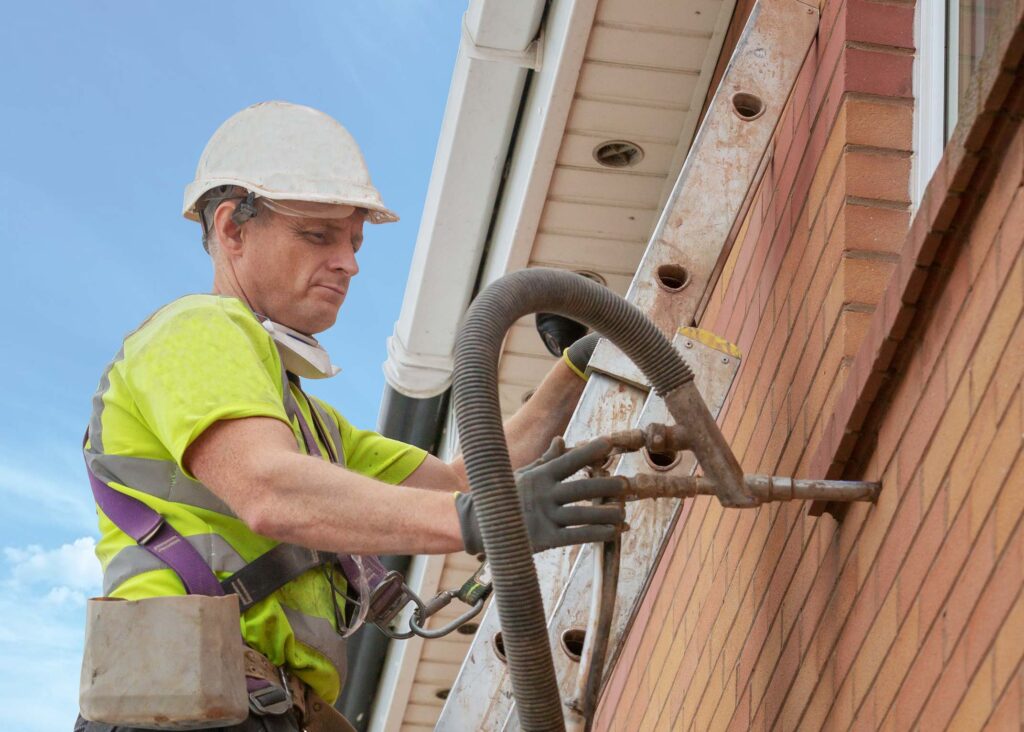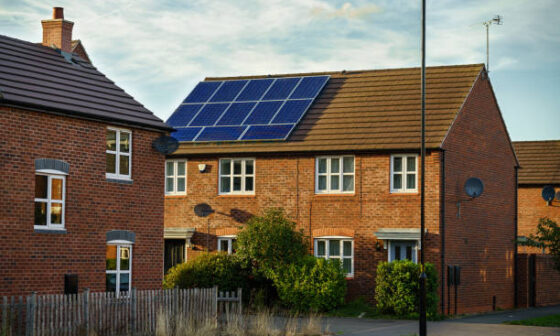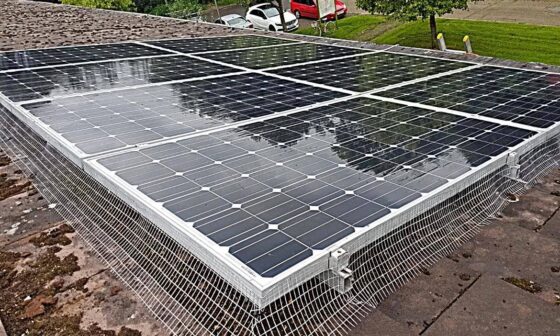
If you live in the UK, you know how important it is to keep your home warm during the colder months. Not only does this make your living space more comfortable, but it can also help you save money on your energy bills.
One effective way to achieve this is by using cavity wall insulation beads. Below, we will discuss what cavity wall insulation beads are, how they work, and the benefits of using them.
What Are Cavity Wall Insulation Beads?
Cavity wall insulation beads are tiny, polystyrene beads that are used to fill the cavity between the inner and outer walls of a building. These beads are injected into the cavity using special equipment that blows them in under pressure. Once inside, the beads interlock with each other to form a barrier that helps to prevent heat loss.
How Do Cavity Wall Insulation Beads Work?
When the temperature outside drops, the heat inside a building naturally flows towards the colder exterior. Without insulation, this can result in significant heat loss, making your home feel colder and requiring more energy to maintain a comfortable temperature.
Cavity wall insulation beads work by creating a barrier that helps to prevent heat from escaping. The polystyrene material used in the beads is a good insulator, which means it can help to reduce heat transfer.
Benefits of Cavity Wall Insulation Beads
There are many benefits to using cavity wall insulation beads, including:
- Improved Energy Efficiency
By preventing heat loss, cavity wall insulation beads can help to make your home more energy-efficient. This means you will need to use less energy to heat your home, which can save you money on your energy bills.
- Increased Comfort
Insulating your home with cavity wall insulation beads can help to improve comfort levels, making your living space feel warmer and more inviting.
- Reduced Noise Pollution
Cavity wall insulation beads can also help to reduce noise pollution, as they act as a sound barrier, preventing sound waves from passing through the walls.
- Environmentally Friendly
Using cavity wall insulation beads is an environmentally friendly option, as it helps to reduce carbon emissions by reducing the amount of energy needed to heat your home.
Average Cost of Cavity Wall Insulation Beads
The average cost of cavity wall insulation beads can vary depending on various factors such as the size of your home, the type of insulation material used, and the installation process. On average, cavity wall insulation using beads can cost anywhere between £10-£20 per square meter, with an average cost of £12 per square meter.
However, it is important to note that this cost may increase or decrease depending on the specific requirements of your home. It is recommended to get quotes from multiple installers and compare their prices to get the best deal.
Different Types of Cavity Wall Insulation Materials
When it comes to cavity wall insulation, there are several different types of insulation materials that can be used. Each material has its own unique properties, advantages, and disadvantages. Here are some of the most common types of cavity wall insulation materials:
-
Polystyrene Beads: Polystyrene beads are one of the most popular types of cavity wall insulation materials. They are lightweight, easy to install, and highly effective at reducing heat transfer. Polystyrene beads can be blown into the cavity using specialist equipment and once installed, they will not settle or degrade over time.
-
Mineral Wool: Mineral wool is another popular insulation material for cavity walls. It is made from rock or glass fibers and is available in a range of densities and thicknesses. Mineral wool is fire-resistant, non-combustible, and can provide excellent thermal and acoustic insulation.
-
Foam: Foam insulation is another option for cavity wall insulation. There are two main types of foam insulation: polyurethane and polyisocyanurate. Foam insulation is highly effective at reducing heat transfer and can provide excellent acoustic insulation as well.
-
Blown Fiber: Blown fiber insulation is made from recycled newspaper or other fibers and is installed using specialist equipment that blows the insulation into the cavity. Blown fiber insulation can provide excellent thermal and acoustic insulation.
-
Cellulose: Cellulose insulation is made from recycled paper and is an eco-friendly option for cavity wall insulation. It is highly effective at reducing heat transfer and can provide good acoustic insulation as well.
The Installation Process for Cavity Wall Insulation Beads
Cavity wall insulation using beads is a relatively straightforward process that can be completed in just a few hours. Here is a step-by-step guide to the installation process:
-
Assessment: The first step in the installation process is to assess the suitability of your property for cavity wall insulation. A professional installer will conduct a survey of your home to determine whether your walls are suitable for insulation and which insulation material is most appropriate.
-
Preparation: Once the suitability of your home has been determined, the installer will prepare the work area by drilling small holes in the external walls of your home. These holes are typically around 22mm in diameter and are spaced about 1 meter apart. The holes are drilled in a specific pattern to ensure that the insulation is evenly distributed throughout the cavity.
-
Insulation: The installer will then use a specialist machine to blow the insulation beads into the cavity through the holes that have been drilled. The machine is connected to a large hopper containing the insulation beads, which are then blown into the cavity using compressed air. The installer will ensure that the cavity is completely filled with insulation and that there are no gaps or voids.
-
Sealing: Once the insulation has been installed, the installer will then seal the holes in the external walls using a matching mortar or sealant. The finish will be as close to the original wall as possible, so the overall appearance of your home will not be affected.
-
Clean-up: Finally, the installer will clean up the work area and remove any debris or waste materials. They will also provide you with a guarantee for the installation and instructions on how to maintain the insulation.
DIY vs Professional Installation: Which is Better for Cavity Wall Insulation Beads?
When it comes to the installation of cavity wall insulation beads, there are two options available: DIY installation or professional installation.
DIY Installation
Some homeowners may be tempted to install cavity wall insulation beads themselves as a way to save money on installation costs. However, there are several risks associated with DIY installation:
-
Inadequate insulation: Poorly installed insulation can result in gaps or voids, reducing the effectiveness of the insulation and allowing heat to escape from your home.
-
Risk of damp and mold: If the insulation is not installed correctly, it can trap moisture in the cavity, leading to the growth of mold and damp problems.
-
Safety concerns: Installing insulation requires drilling holes in the walls, which can be dangerous without the proper equipment and training.
Professional Installation
Hiring a professional installer for cavity wall insulation beads has several advantages:
-
Expert installation: A professional installer has the training and equipment to install the insulation correctly, ensuring that there are no gaps or voids and that the insulation is evenly distributed.
-
Reduced risk of damp and mold: Professional installers will ensure that the insulation is installed correctly, reducing the risk of moisture becoming trapped in the cavity.
-
Safety: Professional installers are trained to handle the equipment safely and to minimize any risks during the installation process.
-
Guarantees: Professional installers will offer a guarantee for the installation, giving you peace of mind that the work has been completed to a high standard.
While DIY installation of cavity wall insulation beads may seem like a cost-effective solution, it can be risky and may not provide the same level of effectiveness as professional installation. Hiring a professional installer can ensure that your insulation is installed correctly and effectively, providing long-term energy savings and a more comfortable living environment.
Summary
Cavity wall insulation beads are an efficient and cost-effective way to improve the energy efficiency of your home. By creating a barrier that helps to prevent heat loss, these tiny polystyrene beads can help to keep your home warmer, more comfortable, and quieter.
Additionally, using cavity wall insulation beads is an environmentally friendly option, making it a great choice for those looking to reduce their carbon footprint.



Comments are closed.